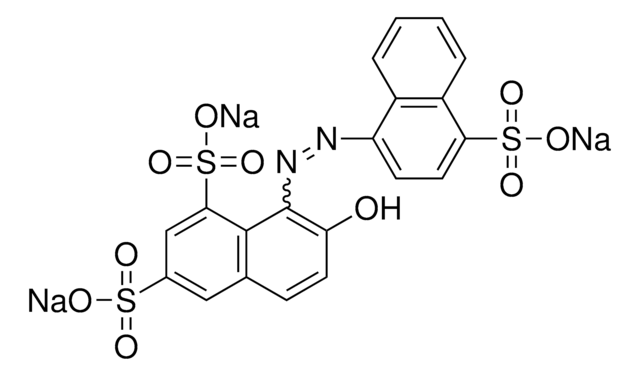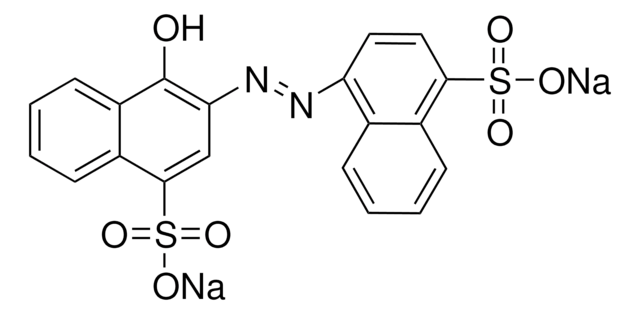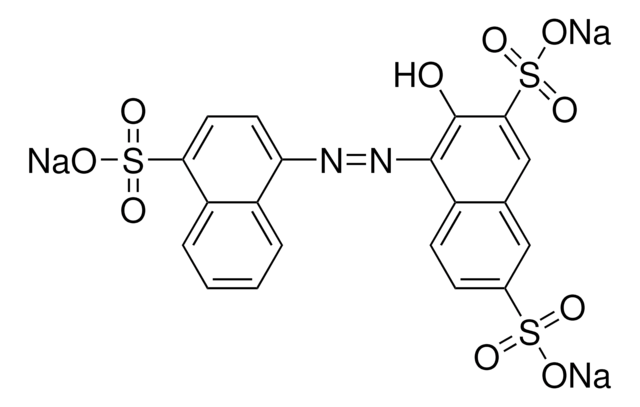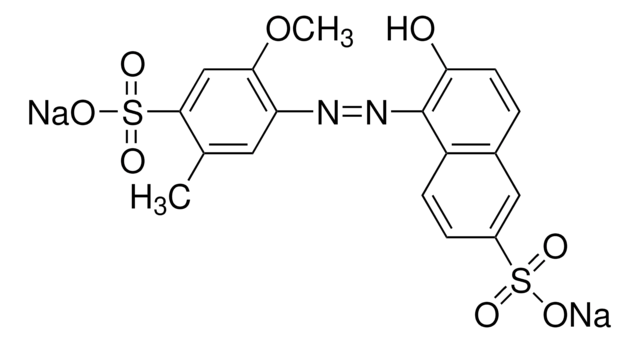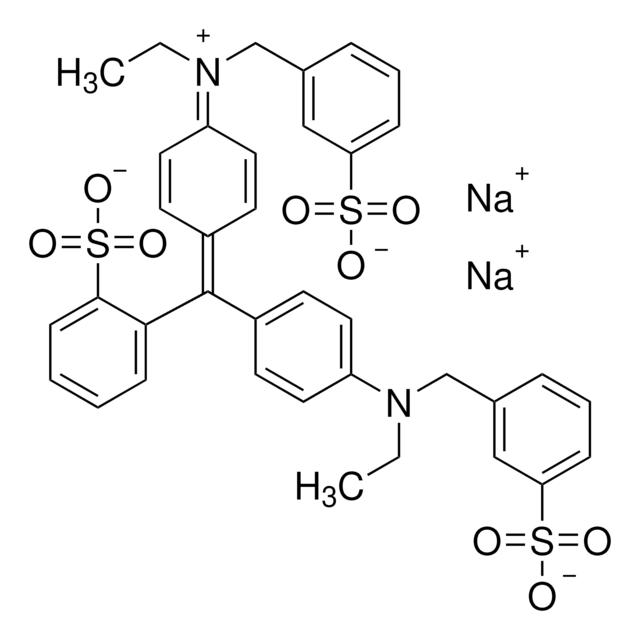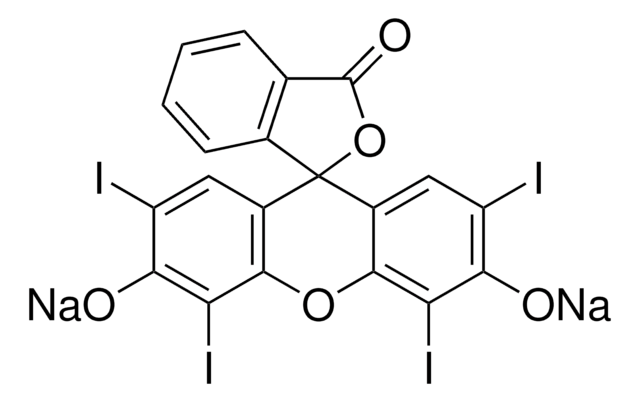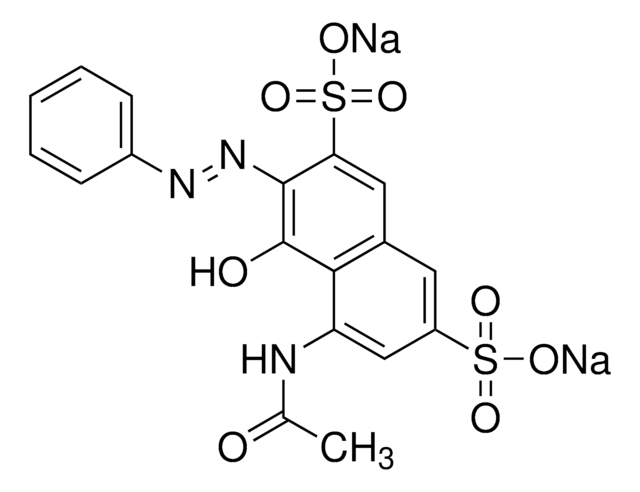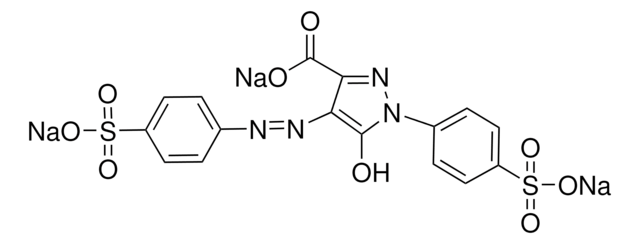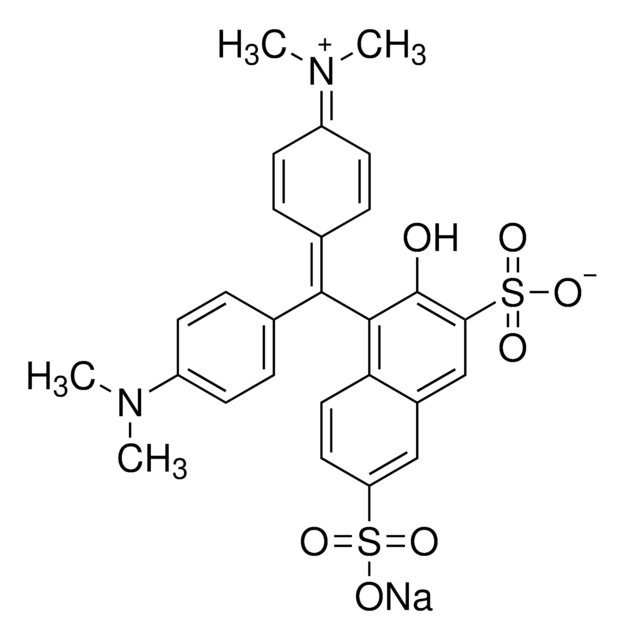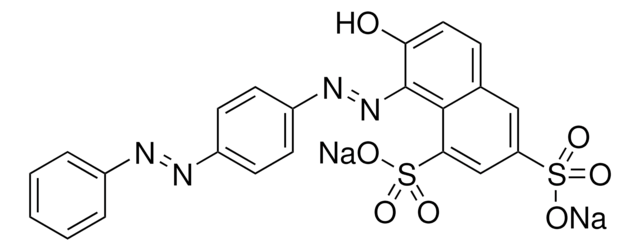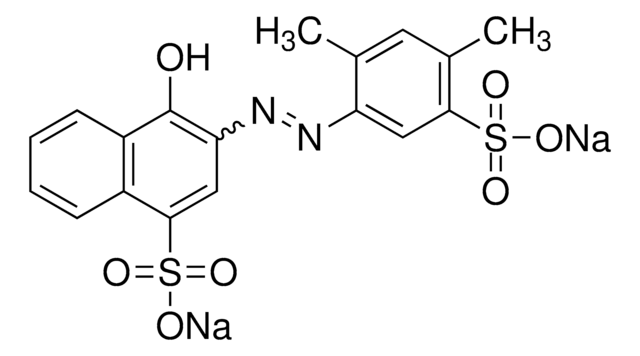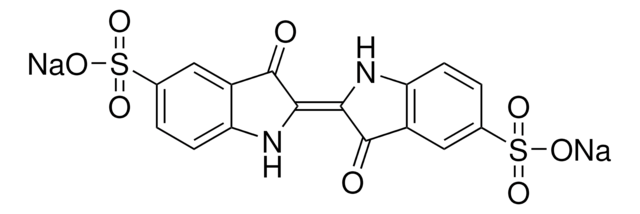52245
Carmoisine
analytical standard
Sinónimos:
Chromotrope FB, Azorubine, Food red 3, Acid Red 14, Disodium 4-hydroxy-3-[(4-sulfo-1-naphthalenyl)azo]-1-naphthalenesulfonate, Mordant Blue 79
About This Item
Productos recomendados
grado
analytical standard
Nivel de calidad
Ensayo
≥98.0% (HPLC)
caducidad
limited shelf life, expiry date on the label
técnicas
HPLC: suitable
gas chromatography (GC): suitable
aplicaciones
cleaning products
cosmetics
food and beverages
personal care
Formato
neat
cadena SMILES
[Na+].[Na+].Oc1c(cc(c2ccccc12)S([O-])(=O)=O)\N=N\c3ccc(c4ccccc34)S([O-])(=O)=O
InChI
1S/C20H14N2O7S2.2Na/c23-20-15-8-4-3-7-14(15)19(31(27,28)29)11-17(20)22-21-16-9-10-18(30(24,25)26)13-6-2-1-5-12(13)16;;/h1-11,23H,(H,24,25,26)(H,27,28,29);;/q;2*+1/p-2/b22-21+;;
Clave InChI
YSVBPNGJESBVRM-ZPZFBZIMSA-L
¿Está buscando productos similares? Visita Guía de comparación de productos
Descripción general
Aplicación
- Food samples using spectrophotometric analysis technique.
- Sweets and beverages using differential pulse polarography.
- Synthetic mixtures and beverages using high performance liquid chromatography with diode array detection (HPLC-DAD).
Envase
Código de clase de almacenamiento
11 - Combustible Solids
Clase de riesgo para el agua (WGK)
WGK 2
Punto de inflamabilidad (°F)
>437.0 °F
Punto de inflamabilidad (°C)
> 225 °C
Elija entre una de las versiones más recientes:
Certificados de análisis (COA)
¿No ve la versión correcta?
Si necesita una versión concreta, puede buscar un certificado específico por el número de lote.
¿Ya tiene este producto?
Encuentre la documentación para los productos que ha comprado recientemente en la Biblioteca de documentos.
Los clientes también vieron
Nuestro equipo de científicos tiene experiencia en todas las áreas de investigación: Ciencias de la vida, Ciencia de los materiales, Síntesis química, Cromatografía, Analítica y muchas otras.
Póngase en contacto con el Servicio técnico